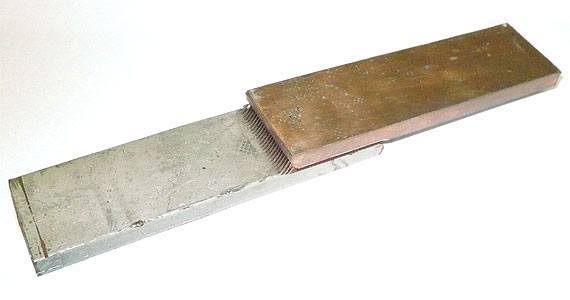
 |
Deformational |
Mechanical, electrical and heat transferring connectors
![]()
The bonding based on the conjugation of the finned sites of the parts, followed by plastic deformation of fined sites.
 |
Fig. 1 - Principle of connection |
 |
Fig. 2 - Permanent bus bar connection, including Cu-Al connection |
 |
 |
Fig. 3 - Cu-Al |
Fig. 4 - Ti-Cu |
 |
 |
Fig. - Cu-Cu |
Fig. - Cu-PTFE |
Main advantages
- fast connection (press, vice, crimping or impact tool)
- minimal transition resistance in comparison with bolting, reducing the cross section of the bas bar without loss of transmission capacity
- invariance of transition resistance when heat cycling
- contact area of the mating parts is several times larger than the original, which provides high-quality electrical and thermal contact with high mechanical strength
- the possibility of joining dissimilar materials, including the possibility of bi-metal, plating parts other metals or polymer sheets (films). When plating by polymers and soft metal DC machining necessary part only.
PUBLICATIONS